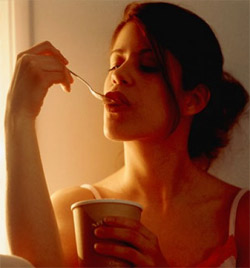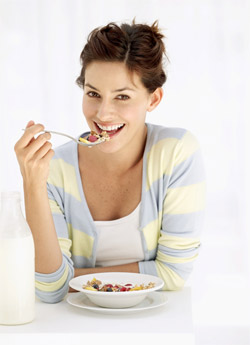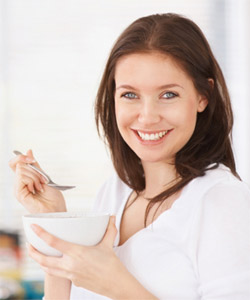|
|
|
 , ,
Font size |
Watermelon King of Aphrodisiac Fruits and Saffron Queen of Aphrodisiac
Spices
Saffron: Queen of Aphrodisiac Spices
 Massimo Marcone, an associate professor of food science at the University of
Guelph, used to dismiss aphrodisiacs as mere folklore. In 2011, in fact, he
conducted a thorough scientific review of more than 200 international studies on
consumable aphrodisiacs, and rejected almost all as invalid. But Marcone was
shocked to find that a few studies on one particular spice�saffron�held up to
close scrutiny. New research recently published online in the journal Food
Research International finds that ginseng and saffron are key to spicing up your sex life. Both boost sexual performance, according to a
scientific review of natural aphrodisiacs done by researchers at the University
of Guelph in Ontario, Canada. Massimo Marcone, an associate professor of food science at the University of
Guelph, used to dismiss aphrodisiacs as mere folklore. In 2011, in fact, he
conducted a thorough scientific review of more than 200 international studies on
consumable aphrodisiacs, and rejected almost all as invalid. But Marcone was
shocked to find that a few studies on one particular spice�saffron�held up to
close scrutiny. New research recently published online in the journal Food
Research International finds that ginseng and saffron are key to spicing up your sex life. Both boost sexual performance, according to a
scientific review of natural aphrodisiacs done by researchers at the University
of Guelph in Ontario, Canada.
�Not only does saffron appear to have aphrodisiac properties for both men and
women,� Marcone says, �but it helps with anxiety, insomnia, PMS and insulin
resistance.� The seductive spice, whose red-gold threads come from a type of
crocus that is native to Mediterranean Europe and Southwest Asia (not the same
variety that pokes its pretty head through Canadian snows in early spring),
contains antioxidants including crocin, crocetin and safranal. These are
believed to be responsible for increasing sexual desire and arousal, according
to studies Marcone reviewed that measured blood flow to sexual organs and
frequency of sexual encounters after consuming the spice.
The ancients knew saffron�s power: It�s said that Alexander the Great added it
to his rice and tea, Cleopatra bathed in it before meeting her lovers, and
Romans were known to sprinkle saffron on newlyweds� beds.
Available in supermarket spice aisles and used in Spanish paella, Moroccan
tajine, Italian risotto and many Persian/Iranian dishes, saffron is pricey,
running from $50 to $300 an ounce. But a little�a tiny pinch�goes a very long
way, says post-doctoral fellow Sanan Wang, who worked with Marcone on the
review. �
What about other spices in your kitchen? Nutmeg, cloves, garlic and ginger also
look promising for sexual potency, Marcone says, but more research is needed.
Don�t hold your breath, though; none of these natural products can be patented,
so drug companies aren't racing to sponsor such a study. Researchers at the
University of Guelph in Ontario, Canada, have conducted an extensive review of
dozens of studies on various plant and animal products thought to have
aphrodisiac powers. Among these, the substances with the most potential � and,
coincidentally, the most palatable � are Korean ginseng and saffron.
Saffron's aphrodisiac properties first were tested in rats, as if rodents have
trouble copulating. Saffron extract increased rat erection frequency. Follow-up
studies on human males with erectile dysfunction revealed how saffron is
marginally effective but just not as good as Viagra. The absence of side
effects, however, pushes the call for more studies.
Saffron, which is produced from the dried stigmas of the Crocus sativus flower,
is a spice commonly used in Spanish, Italian and Indian cuisine. Gingseng is a
root which is also reputed to boost memory and stamina. The study by a team at
the University of Guelph in Ontario, Canada also found that people can indulge
in wine and chocolate, but need to know that the amorous effects are probably
all in their head.
The researchers also found that people should stay away from more obscure
so-called "aphrodisiacs" Spanish fly and Bufo toad. While purported to be
sexually enhancing, they produced the opposite result and can even be toxic.
These are among the findings of the study by Massimo Marcone, a professor in
Guelph's Department of Food Science, and master's student John Melnyk. The
results will appear in the journal Food Research International. "Aphrodisiacs
have been used for thousands of years all around the world, but the science
behind the claims has never been well understood or clearly reported," Professor
Marcone said.
"Ours is the most thorough scientific review to date. Nothing has been done on
this level of detail before now." There is a need for natural products that
enhance sex without negative side effects, he added.
Currently, conditions such as erectile dysfunction are treated with synthetic
drugs, including sildenafil (commonly sold as Viagra) and tadalafil (Cialis).
"But these drugs can produce headache, muscle pain and blurred vision, and can
have dangerous interactions with other medications. They also do not increase
libido, so it doesn't help people experiencing low sex drive," he said.
 The researchers examined hundreds of studies on commonly used consumable
aphrodisiacs to investigate claims of sexual enhancement psychological and
physiological. Ultimately, they included only studies meeting the most stringent
controls. They found that panax ginseng, saffron and yohimbine, a natural
chemical from yohimbe trees in West Africa, improved human sexual function. The researchers examined hundreds of studies on commonly used consumable
aphrodisiacs to investigate claims of sexual enhancement psychological and
physiological. Ultimately, they included only studies meeting the most stringent
controls. They found that panax ginseng, saffron and yohimbine, a natural
chemical from yohimbe trees in West Africa, improved human sexual function.
People report increased sexual desire after eating muira puama, a flowering
plant found in Brazil; maca root, a mustard plant in the Andes; and chocolate.
Despite its purported aphrodisiac effect, chocolate was not linked to sexual
arousal or satisfaction, the study said. "It may be that some people feel an
effect from certain ingredients in chocolate, mainly phenylethylamine, which can
affect serotonin and endorphin levels in the brain," Professor Marcone said.
Alcohol was found to increase sexual arousal but to impede sexual performance.
In a study "Exploring scientifically proven herbal aphrodisiacs" by Sabna Kotta,
Shahid H. Ansari and Javed Ali concluded: Crocus sativus L., commonly known as
saffron, is a perennial stem less herb belongs to the family Iridaceae and is
widely cultivated in Iran and other countries, including India and Greece. In
traditional medicine, saffron is recommended as an aphrodisiac agent. Madan et
al. studied the effects of saffron stigma extract and two active constituents,
crocin and safranal, on sexual behaviors in male rats.
Hosseinzadeh et al. studied the aphrodisiac activities of C. sativus stigma
aqueous extract and its constituents, safranal and crocin, in male rats. The
aqueous extract crocin, safranal, sildenafil as a positive control and saline
were administered intraperitoneally to male rats. MF, intromission frequency
(IF), erection frequency (EF), ML, IL, and EL were the factors evaluated during
the sexual behavior study. It was found that Crocin, at all doses, increased MF,
IF and EF behaviors and reduced EL, IL and ML parameters. Safranal did not show
aphrodisiac effects. The present study revealed the aphrodisiac activity of C.
sativus aqueous extract and its constituent crocin.
Safarinejad et al. conducted an open label, randomized, fixed-dose, crossover
study comparing efficacy and safety of sildenafil citrate and saffron for
treating ED in men na�ve to treatment. The findings do not support a beneficial
effect of saffron administration in men with ED.
As for the contribution from this region to our sexual palates, it turns out
that saffron, a spice used along Europe�s glamorous Mediterranean coast and
throughout Middle Eastern cuisine, from Iran to Iraq, Turkey to Greece with
evidence dating back thousands of years, may be one of the most potent enhancers
yet. Stories abound about the use of saffron by Cleopatra (who is said to have
taken baths in waters scented with this rare gem prior to making love), Ancient
Persia, the Sumerians and Alexander the Great (as a curative for battle wounds),
among many others.
To this day, the northern town of Safranbolu in Turkey � a UNESCO World Heritage
Site whose name is derived from this delicate flower � is known for its annual
saffron harvest festivals. Even the Hebrew Bible sets claim to saffron�s
seductiveness in the Song of Solomon. It has been suggested that part of
saffron�s magical property is thought to be its enhancement of �lust� via
certain neurotransmitters that stimulate libido or erogenous zones. Saffron may
also lower blood pleasure and stimulate respiration.
The parts used for culinary purposes are the stigma or style, the female sexual
organs of the flower. There are three stigma on any one flower, so it takes
150,000 flowers to produce one kilogram of dried saffron, making it the most
expensive spice in the world. Iran and Spain are the world�s largest producer of
this flower (part of the Iris family Iridaceae) accounting for 80% of the global
crop.
While their findings support the use of foods and plants for sexual enhancement,
the authors urge caution. �Currently, there is not enough evidence to support
the widespread use of these substances as effective aphrodisiacs,� Marcone said.
�More clinical studies are needed to better understand the effects on humans.�
Studies on Aphrodisiac effect of Saffron
Hum Psychopharmacol. 2013.
 Saffron for treatment of fluoxetine-induced sexual dysfunction in women:
randomized double-blind placebo-controlled study. This was a randomized
double-blind placebo-controlled study. Thirty-eight women with major depression
who were stabilized on fluoxetine 40 mg/day for a minimum of 6 weeks and had
experienced subjective feeling of sexual dysfunction entered the study. The
patients were randomly assigned to saffron (30 mg/daily) or placebo for 4 weeks.
Results show saffron may safely and effectively improve some of the
fluoxetine-induced sexual problems including arousal, lubrication, and pain. Saffron for treatment of fluoxetine-induced sexual dysfunction in women:
randomized double-blind placebo-controlled study. This was a randomized
double-blind placebo-controlled study. Thirty-eight women with major depression
who were stabilized on fluoxetine 40 mg/day for a minimum of 6 weeks and had
experienced subjective feeling of sexual dysfunction entered the study. The
patients were randomly assigned to saffron (30 mg/daily) or placebo for 4 weeks.
Results show saffron may safely and effectively improve some of the
fluoxetine-induced sexual problems including arousal, lubrication, and pain.
Arch Ital Urol Androl. 2013.
An improvement in sexual function is related to better quality of life,
regardless of urinary function improvement: Results from the IDIProst� Gold
Study. The relationship between lower urinary tract symptoms (LUTS) and erectile
dysfunction (ED) has recently received increased attention. The aim of this
study was to evaluate the efficacy of the Alfa-5� association of Serenoa repens,
Pinus massoniana Bark Extract (PMBE) and Crocus sativus (IDIProst� Gold) in
improvement of patient's quality of life, when compared with Serenoa repens
alone. Materials and Methods. All patients with clinical and instrumental
diagnosis of LUTS due to Benign Prostatic Hyperplasia (BPH) and ED, attending 5
Italians Urological Institutions from May to December 2012 were enrolled in this
prospective, multicentre, phase 3 study. Participants were assigned to receive
oral capsules of IDIProst� Gold (one capsule q24 h) or Serenoa repens 320 mg
(one capsule q24h) for 3 months. Clinical and instrumental analyses were carried
out at the enrolment and at the end of therapy. IPSS, IIEF-5 and SF-36
questionnaires have been used. The main outcome measure was the improvement of
quality of life at the end of the whole study period. Results.
129 (mean age 45-71) men were randomly allocated to IDIProst Gold (n = 83) or
Serenoa repens (n = 46. At the follow-up examination, statistically significant
differences have been reported in terms of IPSS, IIEF-5 and SF-36 mean scores.
Moreover, statistically significant differences were then reported between the
two visits, in terms of IPSS, IIEF-5 and SF-36 scores, only in the IDIProst�
Gold group. Conclusions. In conclusions, we found that IDIProst� Gold
significantly improve the quality of life of patients affected by LUTS due to
BPH and ED, specifically in terms of sexual function, highlighting that a better
sexual quality of life is correlated with an higher overall quality of life
regardless of the urinary function.
Psychopharmacology, 2012
To assess the efficacy and tolerability of saffron in fluoxetine-related sexual
dysfunction. This was a 4-week randomized double-blind placebo-controlled study.
Thirty-six married male patients with major depressive disorder whose depressive
symptoms had been stabilized on fluoxetine and had subjective complaints of
sexual impairment entered the study.
The patients were randomly assigned to saffron (15 mg twice per day) or placebo
for 4 weeks. International Index of Erectile Function scale was used to assess
sexual function at baseline and weeks 2 and 4. Thirty patients finished the
study. Baseline characteristics as well as baseline and final depressive
symptoms scores were similar between the two groups. Effect of time � treatment
interaction on the total score was significant. By week 4, saffron resulted in
significantly greater improvement in erectile function and intercourse
satisfaction domains, and total scores than the placebo group. Effect of saffron
did not differ significantly from that of placebo in orgasmic function, overall
satisfaction, and sexual desire domains scores. Nine patients (60%) in the
saffron group and one patient (7%) in the placebo group achieved normal erectile
function (score > 25 on erectile function domain) at the end of the study.
Frequency of side effects were similar between the two groups. Saffron is a
tolerable and efficacious treatment for fluoxetine-related erectile dysfunction.
Pharmacogn Rev. 2010.
Saffron or Crocus sativus: A comprehensive review. Faculty of Pharmacy, Babu
Banarasi Das National Institute of Technology and Management, Dr. Akhilesh Das
Nagar, Faizabad Road, Lucknow, Uttar Pradesh, India . Crocus sativus belonging
to the family Iridaceae (syn - kesar) comprises the dried red stigma and is
widely cultivated in Iran and other countries such as India and Greece. Saffron
contains more than 150 volatile and aroma-yielding compounds mainly terpenes,
terpene alcohol, and their esters. The bitter taste and an iodoform or hay-like
fragrance are caused by chemicals picrocrocin and safranal. C. sativus possesses
a number of medicinally important activities such as antihypertensive,
anticonvulsant, antitussive, antigenototoxic and cytotoxic effects, anxiolytic
aphrodisiac, antioxidant, antidepressant, antinociceptive , anti-inflammatory,
and relaxant activity. It also improves memory and learning skills, and
increases blood flow in retina and choroid. The present review explores the
historical background, chemical constituents, pharmacological actions, uses,
substitutes and adulterants, and toxicity. It also deals with its evaluation,
formulations, and chemical tests in detail.
 An open label, randomized, fixed-dose, crossover study comparing efficacy and
safety of sildenafil citrate and saffron (Crocus sativus) for treating erectile
dysfunction in men na�ve to treatment: International Journal of Impotence
Research 2010. An open label, randomized, fixed-dose, crossover study comparing efficacy and
safety of sildenafil citrate and saffron (Crocus sativus) for treating erectile
dysfunction in men na�ve to treatment: International Journal of Impotence
Research 2010.
Saffron (Crocus sativus) have been perceived by the public as a strong
aphrodisiac herbal product. However, studies addressing the potential beneficial
effects of saffron on erectile function (EF) in men with ED are lacking. Our aim
was to evaluate the efficacy and safety of saffron administration on EF in men
with ED. After a 4-week baseline assessment, 346 men with ED were randomized to
receive on-demand sildenafil for 12 weeks followed by 30 mg saffron twice daily
for another 12 weeks or vice versa, separated by a 2-week washout period. No
significant improvements were observed. The mean changes from baseline values in
IIEF-EF domain were +87% and +9% in sildenafil and placebo groups, respectively.
These findings do not support a beneficial effect of saffron administration in
men with ED.
The effect of saffron, Crocus sativus stigma, extract and its constituents,
safranal and crocin on sexual behaviors in normal male rats. Phytomedicine.
2007.
The aphrodisiac activities of saffron stigma aqueous extract and its
constituents, safranal and crocin, were evaluated in male rats. The aqueous
extract crocin, safranal, sildenafil as a positive control and saline were
administered intraperitoneally to male rats. Mounting frequency (MF),
intromission frequency (IF), erection frequency (EF), mount latency (ML),
intromission latency (IL) and ejaculation latency (EL) were the factors
evaluated during the sexual behavior study. Crocin, at all doses, and the
extract, especially at doses 160 and 320mg /kg body wt., increased MF, IF and EF
behaviors and reduced EL, IL and ML parameters. Safranal did not show
aphrodisiac effects. The present study reveals an aphrodisiac activity of
saffron aqueous extract and its constituent crocin.
Before turning to exotic substances, consider improving your health. As reported
in the American Journal of Medicine in 2007, erectile dysfunction is highly
correlated with poor physical health and inactivity: More than 50 percent of
diabetics, 44 percent of those with high blood pressure, and 26 percent of
subjects watching three or more hours of television per day had trouble
achieving an erection either "sometimes" or "always." The side effects of diet
and exercise include better self-confidence, which could be the best
aphrodisiac yet.
Back
Dated 03 March 2015
|
|
|
|
|









